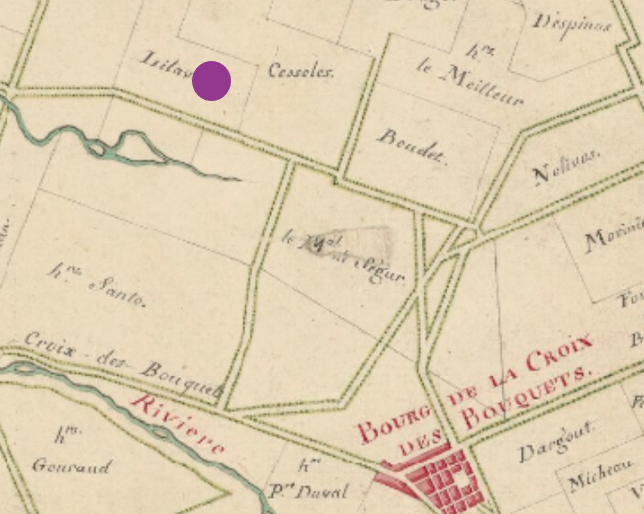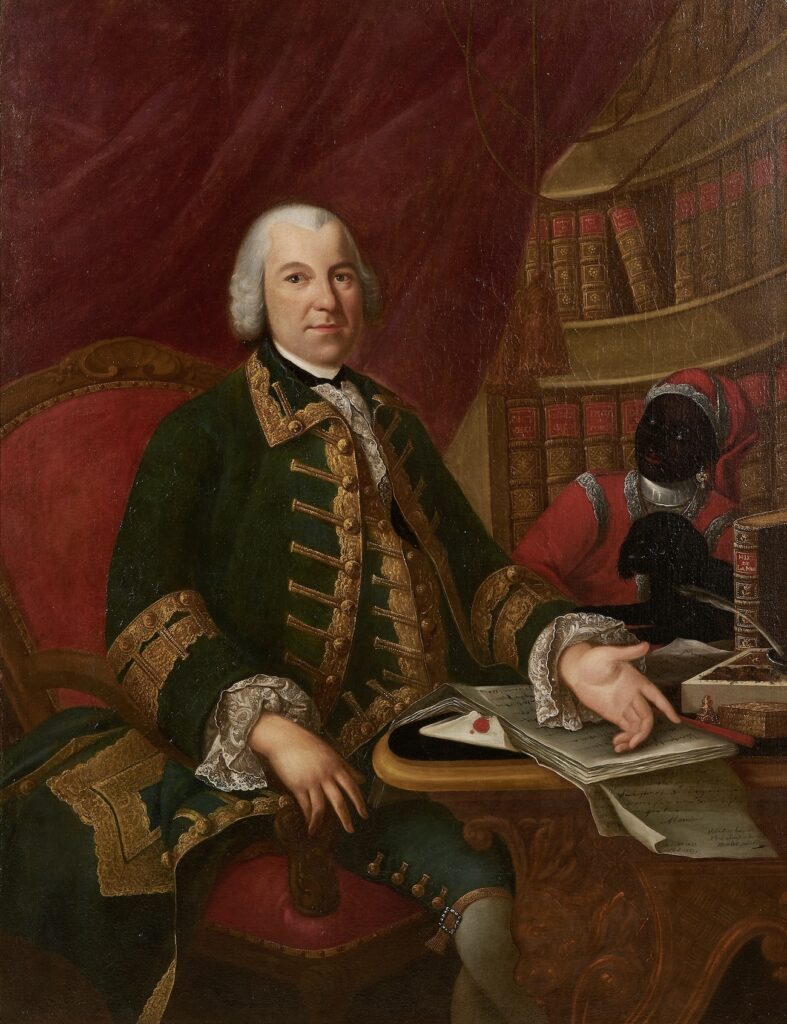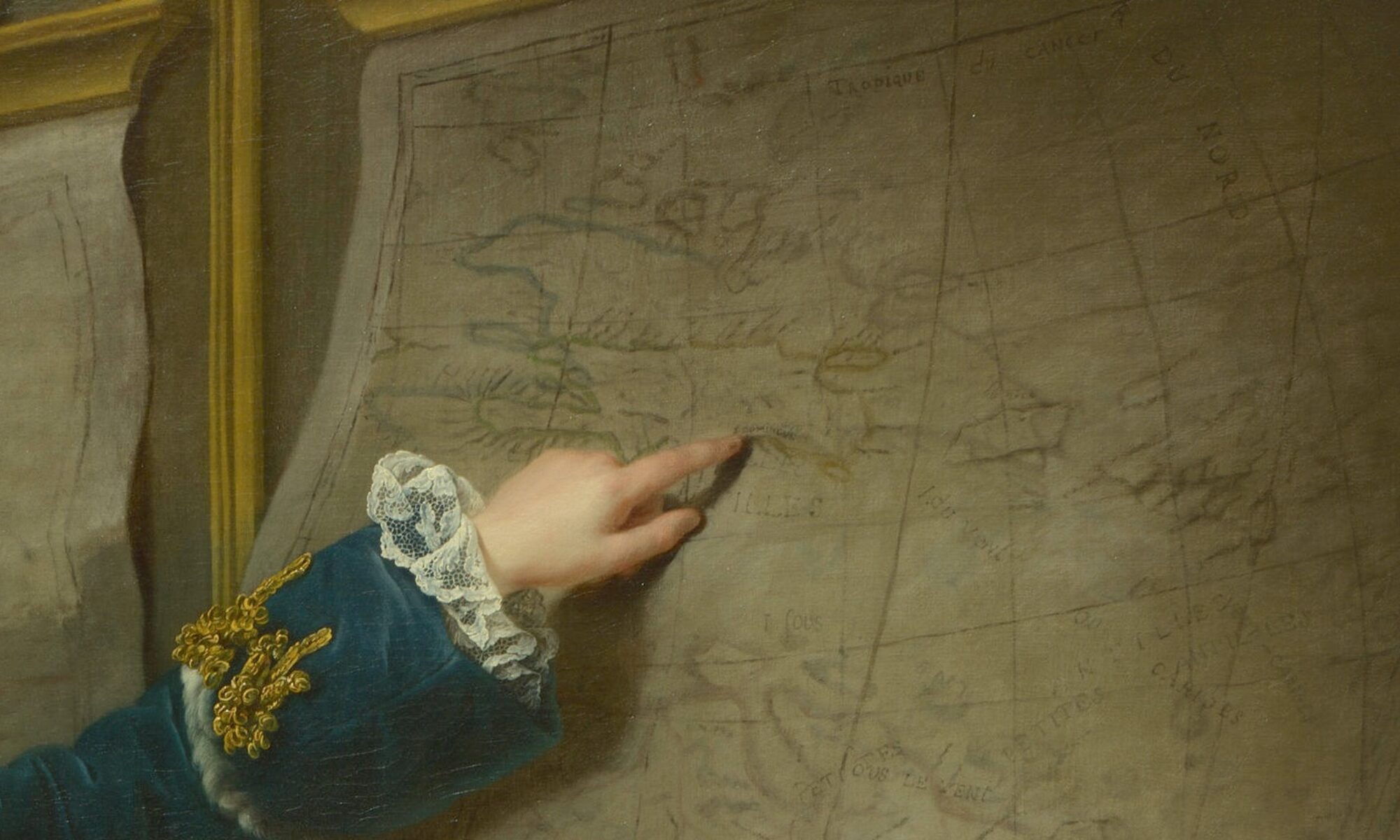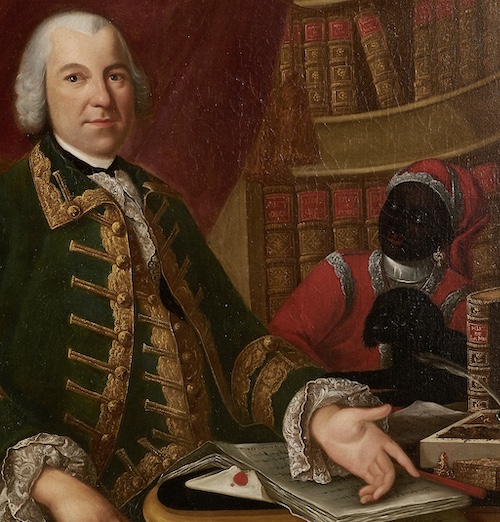Meredith Martin (New York University)

In 1786, an enslaved man called Jean-François escaped from the Lilavois plantation, where this marker is located (Fig. 1). A reward was offered for his capture in the Saint-Domingue newspaper Affiches américaines, which regularly published advertisements for enslaved “runaways” (maroons). From this ad we learn, among other things, that Jean-François was an accomplished wigmaker.
Wigs (perruques) were a ubiquitous fashion item in both metropolitan and colonial France. Originally associated with aristocrats, by the mid-eighteenth century they were widely worn by merchants, artists, and other professionals, like the Saint-Domingue slave trader Stanislas Foäche, who found them both practical and vital as a means of self-expression. Shops selling all manner of wigs proliferated in Paris and in other metropolitan cities like Le Havre and Nantes, as well as in the Saint-Domingue towns of Port-au-Prince and Cap-Français (now Cap Haïtien). Wigmakers or perruquiers also worked in theaters and domestic residences, where hairdressing was an intimate daily task typically performed by servants.
Hundreds of enslaved men and (less often) women were identified as wigmakers in two period sources: government records documenting the entry of persons of color into metropolitan France; and newspaper advertisements for fugitive slaves like the one posted for Jean-François. Regarding the former, since French colonists had to justify bringing enslaved men and women to the metropole, many claimed they were planning to instruct these individuals in the art of hairdressing, which they could then practice once they returned to the colonies. Such a claim, specious or not, would not have been questioned by Crown authorities, given the popularity of wigs and the fact that the latest trends originated in France.[1]

Scores of young men were brought from Saint-Domingue to France for the supposed purpose of learning this métier. One such man was “Laurent,” a fourteen-year-old creole who arrived in Paris in 1762 and was portrayed alongside his white enslaver, Mlle Desgots.[2] Another was “Polidor, called Joseph after baptism,” a twenty-year-old man originally from Sierra Leone who was recorded (in 1748 and 1762) as being “owned” by the Deurbroucq family, prominent colonial traders in Nantes.[3] A 1753 portrait of the merchant Dominique-René Deurbroucq and an African servant wearing a prominent metal collar (possibly Polidor/Joseph himself) gives a sense of the appearance and role of enslaved domestics who may have been forced to practice hairdressing among their many duties (Fig. 2). Following the conventions of this portrait type, it uses strong color contrasts to accentuate the difference—and suggest a racialized power dynamic—between Deurbroucq, with his pale skin and white powdered wig, and his Black servant and dog. Powdered wigs, as Angela Rosenthal has shown, amplified these racist divisions by highlighting the supposedly superior whiteness of European wearers, and by pitting their controlled tresses against the dark, “allegedly unkempt” hair associated with Africans.[4]
Such categories were brutally enforced but also subverted in Saint-Domingue. White colonists wore powdered wigs, but so too did free persons of color, sometimes to indicate their membership in the elite planter class.[5] The contrast between a white powdered wig and dark skin, as evoked in a 1788 portrait of the Chevalier de Saint-Georges (a mixed-race composer born in Guadeloupe), may have challenged racial hierarchies by underscoring how wigs, and the supposedly superior values they connoted, could be acquired or performed regardless of race. Many prominent members of the free Black community in Saint-Domingue also established themselves professionally as wigmakers, most notably Jean-Baptiste Belley, who lived in the town of Cap-Français and was identified as a perruquier in notarial and parish registers.[6] Some of these free Black wigmakers, including Belley, may have learned the art of hairdressingas former slaves, perhaps using their skills to obtain their freedom.
Based on advertisements in the Affiches américaines, wigmakers represented the second highest occupational category of enslaved escapees from plantations in the pre-Revolutionary period. These inhabitants may simply have had greater means to escape (since they likely lived in the main residence and needed to travel to town for supplies), but they may have also recognized the demand for their craft and the possibilities it afforded. One such escaped wigmaker, mentioned at the beginning of this essay, was a mixed-race man known as Jean-François. An ad published in the Affiches on April 5, 1786 claims that he had formerly been apprenticed to a Port-au-Prince perruquier named “sieur Montreal,” but at the time of his escape had been residing at Mare-à-Daniel, a plantation partly owned by M. Lilavois. The ad further describes Jean-François as having “lively eyes” and “sunken cheeks,” and it notes that he could play the horn and speak Spanish but says nothing about his hair. It does, however, warn readers that he was “perhaps calling himself free”—suggesting his decision to self-emancipate and cast off the dehumanizing yoke of enslavement like an old wig.
[1] Jennifer L. Palmer, “Atlantic Crossings: Race, Gender, and the Construction of Families in Eighteenth-Century La Rochelle” (PhD dissertation, University of Michigan, 2008), 262.
[2] Julia Doe, “Musical Sociability, Atlantic Slavery, and the Portraiture of Carmontelle,” The Journal of Musicology 41, no. 1 (2024): 1-40.
[3] Érick Noël et al., eds., Dictionnaire des gens de couleur dans la France moderne, 3 vols. (Geneva: Libraire Droz, 2001), 1, n. 446; and 2, n. 2775.
[4] Angela Rosenthal, “Raising Hair,” Eighteenth-Century Studies 38, no. 1 (Fall 2004): 2. See also Palmer, “Atlantic Crossings,” 262.
[5] Stewart R. King, Blue Coat or Powdered Wig: Free People of Color in Pre-Revolutionary Saint-Domingue (Athens: University of Georgia Press, 2001).
[6] Jean-Louis Donnadieu, “Derrière le portrait, l’homme: Jean-Baptiste Belley, dit ‘Timbaze’, dit ‘Mars’ (1746?-1805),” Bulletin de la Société d’Histoire de la Guadeloupe 170 (January-April 2015), 29-54, dit.org/en/journals/bshg/2015-n170-bshg01792/1029391ar.pdf
Cite this post as: Meredith Martin, “Wigs and Enslaved Wigmakers,” Colonial Networks (May 2025), https://www.colonialnetworks.org/?p=810.

